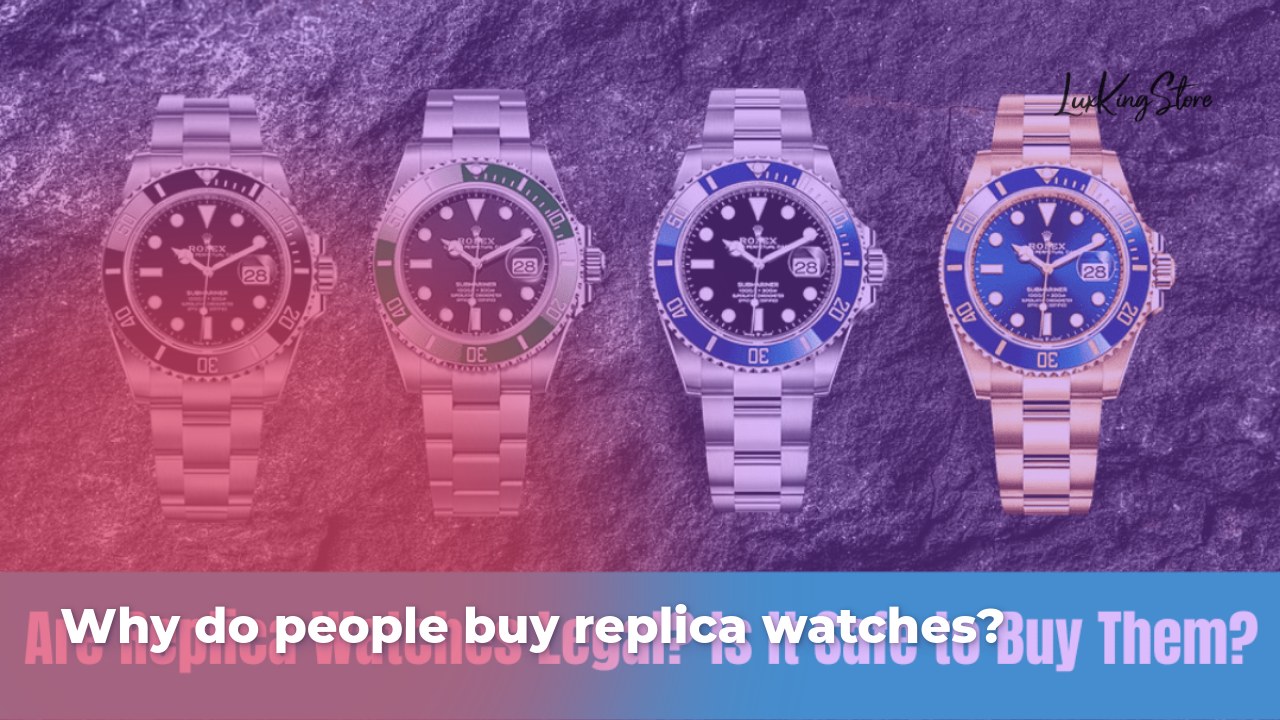Why Do People Buy Replica Watches?
Why Do People Buy Replica Watches?
In a world where luxury often comes at a staggering price, the allure of replica watches is undeniable. For many, the prospect of owning a luxury timepiece without the accompanying financial strain is an enticing idea. Imagine being able to don a wristwatch that closely resembles an expensive Rolex or an exquisite Patek Philippe without the overwhelming cost. This phenomenon raises intriguing questions. Why do people buy replica watches? In this detailed exploration, we will delve into the many factors that contribute to the growing popularity of replica watches, unveiling the motivations and social dynamics that drive this trend.
Understanding the Appeal of Replica Watches
The appeal of replica watches is a complex interplay of economic, psychological, and social factors. At its core, consumers are often seeking a balance between cost and status. As trends in fashion and luxury evolve, so do consumer desires. Replica watches provide an accessible entry point into the world of luxury, bridging the gap for those who admire high-end brands but cannot justify their exorbitant price tags. This desire for ownership, coupled with aspirational marketing and social media influence, fuels the ongoing popularity of replicas, prompting deeper inquiries into consumer behavior and values in our modern society.
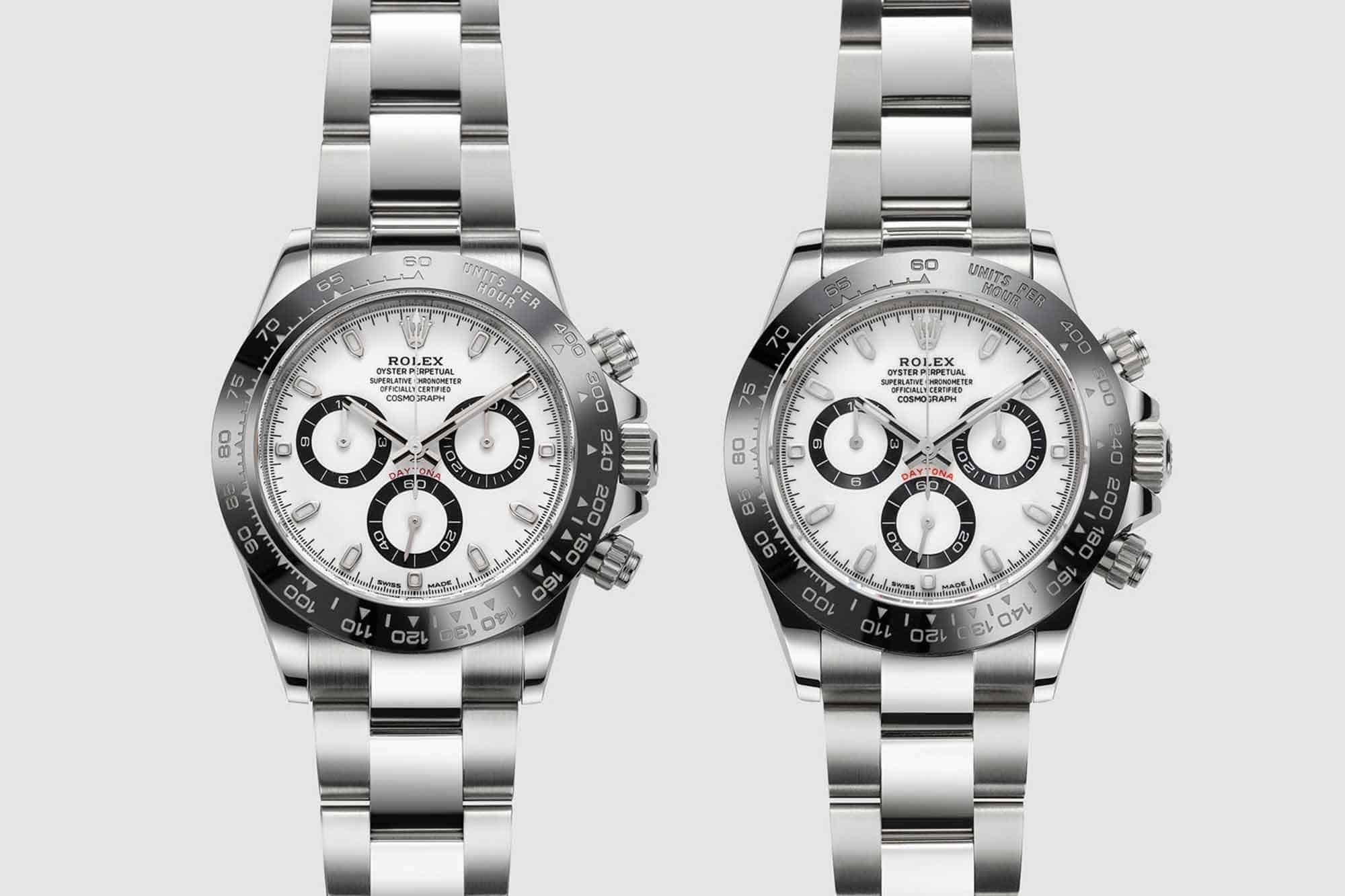
The Desire for Luxury at an Affordable Price
When it comes to the world of luxury watches, many consumers find themselves in a marketplace filled with high prices and exclusivity. Authentic luxury watches often range from thousands to tens of thousands of dollars, leading to a significant financial barrier for a large portion of potential buyers. Replica watches step in to fill this void, offering an attractive alternative that allows individuals to enjoy the aesthetics of luxury without the daunting price tag.
- Affordability: A significant aspect that draws people towards replica watches is their affordability. For instance, while a genuine Rolex might cost upwards of $10,000, a well-made replica may be obtainable for as little as $200 to $500. This substantial difference in pricing allows those on a tighter budget to experience a semblance of luxury.
- Wide Variety: The replica market is diverse, offering a vast array of styles that may be rare or hard to find in genuine models. This diversity appeals to collectors and enthusiasts who crave uniqueness in their watch collections without the accompanying market highs.
- A Taste of Luxury: Many wear replicas as a means of experiencing a lavish lifestyle without the substantial expenditure. The desire to mimic high-status symbols is a powerful motivator that drives consumers to embrace replicas as a legitimate option for showcasing elegance and sophistication.
- Quality of Craftsmanship: While some may argue that the craftsmanship of replicas pales in comparison to their authentic counterparts, there are several high-quality replicas available that closely resemble genuine models in appearance. It is essential to distinguish between “super clones” which are crafted with higher precision and lower-quality imitations.
In summary, the appeal of replicates is significantly tied to their ability to enable consumers to experience luxury at a fraction of the cost, making them an attractive choice in a society that places a high value on status symbols.
Status Symbol: What Does a Watch Represent?
The concept of a luxury watch extends far beyond its function as a timekeeping device; it serves as a tangible status symbol, an emblem of achievement, and a reflection of lifestyle. Wearing a luxury watch can denote social standing and personal success, making them coveted items in fashion and societal norms.
- Symbol of Achievement: In many cultures, luxury watches symbolize financial success and personal achievement. The association of brands like Rolex and Omega with high-status lifestyles attracts consumers who wish to signal their ascent in social standing through their accessories.
- Increased Social Validation: The desire for validation from peers can drive individuals to acquire items that signify luxury, further reinforcing the watch’s role as a status symbol. The ability to showcase such items leads to feelings of pride and recognition within social circles.
- Peer Influence: As individuals see their friends or acquaintances flaunting luxury watches, the pressure to conform can be substantial. The desire to fit in or to project a certain image may lead consumers to opt for replicas to portray the same status without the financial burden.
- Cultural Context: In societies where success is often measured by possessions, owning a luxury watch even a replica can positively affect one’s social standing. Cultural values can greatly influence the acceptance and desirability of such designs, impacting consumer choices significantly.
In conclusion, watches aren’t merely items for telling time; they embody a blend of personal identity, social validation, and cultural significance, making replica watches an appealing substitute in the quest for recognition and status.
Influence of Social Media on Watch Trends
The rise of social media has dramatically transformed the landscape of consumer behavior, especially regarding fashion and luxury items. Platforms like Instagram, TikTok, and YouTube have become vital channels for showcasing watches, enabling users to display personal style and preferences while interacting with a broader audience.
- Trend Amplification: Influencers and watch enthusiasts frequently showcase their collections, creating a sense of immediacy and desirability for participating in luxury trends. The more a specific style is highlighted on social media, the greater its appeal becomes to a wider audience, including those who might typically shy away from purchasing replicas.
- Accessibility to Information: Social media ensures that information about authentic and replica watches is abundantly available, increasing consumer awareness. Potential buyers can engage in discussions, seek opinions, and view a plethora of content related to luxury timepieces, which facilitates educated purchasing decisions.
- Social Pressure and Expectation: The curated portrayals of luxury lifestyles can foster a sense of pressure among users to conform to these standards, making replica watches an appealing alternative. The desire to display a luxurious aura without the exorbitant cost is thus magnified through constant exposure to opulent lifestyles.
- Personal Branding: Individuals often use their watch collections as an extension of their personal brand, communicating values such as sophistication, style, and success. Replicas serve to project similar attributes while reducing the financial strain that accompanies genuine luxury items.
In essence, the intertwining of social media and luxury watch culture underlines the significance of perception and viability in the purchase of replica watches, creating a virtual ecosystem where trends real or replicated flourish.
Motivations Behind Purchasing Replica Watches
As we examine the dynamics of replica watch purchases more closely, we can assess various motivations that drive consumer choice. Beyond the superficial allure of luxury, motivations are steeped in personal emotion, societal dynamics, and financial considerations, forming a nuanced landscape of consumer behavior.
Economic Factors Driving Replica Watch Purchases
Economic implications are perhaps the most vital considerations when it comes to the attraction of replica watches. In a world where every dollar counts, individuals must carefully weigh their options, often leading them to explore replicas as a prudent financial decision.
- Cost-Effectiveness: Authentic luxury watches may often seem appealing, but their pricing means that they are out of reach for many consumers. While perfect copies can start as low as $200 to $500, genuine brands can command prices upwards of thousands. This massive cost variance is a fundamental factor in consumer decision-making.
- Value Perception: For many, replicas provide a reasonable semblance of value, encapsulating the desired aesthetics of high-end brands without major financial compromise. Buyers often engage in a cost-benefit analysis, prioritizing style and appearance over brand authenticity.
- Accessibility to Luxury: Economy-driven models of today emphasize democratic fashion. Replicas enable consumers to tap into the world of high fashion while respecting their budget constraints. The affordability of replicas allows broader access to luxury goods, democratizing trends traditionally locked behind paywalls.
- Flexibility in Spending: Owning multiple replicas can provide variety, wherein consumers can match their accessories to different outfits or occasions without feeling financially constrained. This flexibility grants wearers a sense of versatility that authentic pieces may not afford.
Overall, economic factors serve as a considerable influence upon which consumers rely heavily when deciding on the purchase of replica watches, encapsulating the desire for luxury without exorbitant costs.
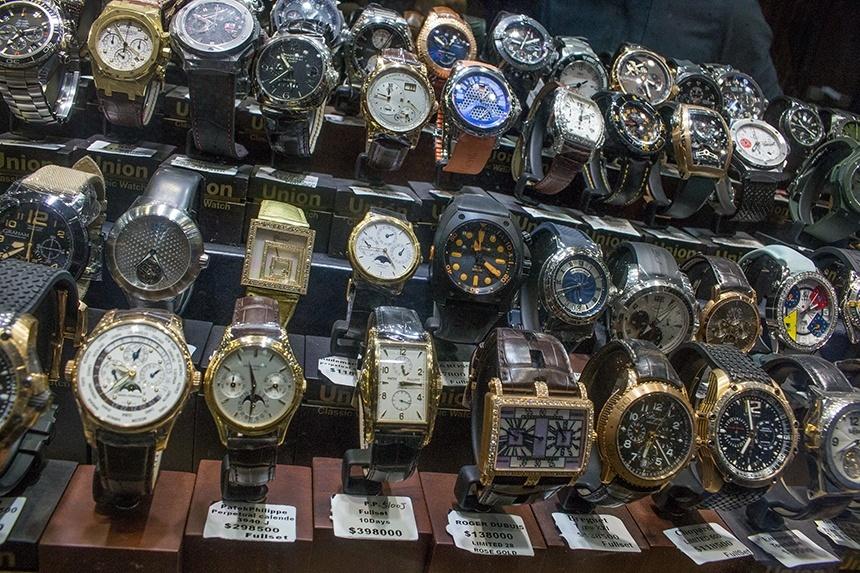
Personal Satisfaction and Emotional Connection
The motivations behind purchasing replica watches expand beyond rational economic considerations. Emotional and psychological factors play a crucial role in the decision-making process, driving enthusiasts to engage with these products on a more personal level.
- Emotional Fulfillment: Owning a replica watch can evoke feelings of joy and satisfaction. The aesthetic appeal enables consumers to enjoy luxury designs they admire without incurring the stress of financial strain. Thus, the emotional satisfaction associated with ownership is a driving force.
- Aspiration and Identity: For many, replica watches signify aspirations towards budgets that don’t accommodate genuine luxury. Wearing such pieces can fulfill a personal desire to project a desired image or lifestyle associated with prestige, wealth, and sophistication.
- Brand Affinity: Emotional connections to brands can drive individuals to adopt replicas as substitutes, especially when loyalty to a brand persists despite financial constraints. Consumers often form attachments to specific designs and motifs, leading to repeated purchases.
- Belonging and Acceptance: In a society heavily influenced by trends, the desire for social acceptance can be significant. Wearing a replica allows individuals to fit into certain social contexts and peer groups where luxury items are the norm, reinforcing the psychological need for connection and validation.
Through understanding emotional needs tied to authenticity and personal identity, one can grasp the reasons behind consumers’ willingness to invest in replica watches as a symbolic gesture to satisfy personal and social aspirations.
The Role of Brand Perception in Buying Behavior
Brand perception emerges as a pivotal element influencing buying behavior. The way luxury brands are perceived can significantly impact consumer choices. With replicas bearing logos and designs reminiscent of authentic brands, understanding consumer psychology concerning perception is paramount.
- Influence of Reputation: Established brands have cultivated a reputation over decades. The allure of owning a product from a prestigious name can weigh heavily on purchasing decisions, even when buying a replica. Consumers find value in how they are perceived when they display branded items, driving further demand.
- Unrivaled Prestige: By wearing a replica of a luxury watch, individuals may still convey a sense of prestige associated with high-end brands, even if the authenticity is questioned. For many, simply wearing the symbol provides psychological validation reflective of their aspirations.
- Social Signaling: Brands play a crucial role in social signaling, communicating values through the objects we choose to adorn ourselves. Consumers opt for replicas to align themselves with the image associated with premium brands, hoping to reflect those qualities within their social spheres.
- Exposure to Marketing: Ongoing exposure to marketing campaigns reinforces brand perception. Advertisements positioning luxury products as symbols of success can lead to a subconscious internalization of brand values, prompting consumers to seek replicas that generate similar impressions.
In essence, brand perception remains a driving force in the decision-making processes of replica watch purchases, linking social validation, identity, and the pursuit of authenticity within a consumer-driven society.
Comparing Replica Watches to Genuine Timepieces
As we dive into the nuances between replica watches and genuine timepieces, it becomes vital to highlight the stark differences that govern consumer decision-making. While both types cater to different segments of the luxury watch market, understanding their contrasts reveals the motivations behind purchases.
Quality and Craftsmanship: How Do They Stack Up?
The quality of craftsmanship and materials diverges considerably when comparing replica watches to their genuine counterparts, impacting consumer perceptions and purchases.
- Artisanal Mastery: Genuine luxury watches, such as those made by Rolex or Patek Philippe, are created through rigorous artisanal processes led by skilled craftsmen. Each piece is often hand-assembled with rigorous attention to detail, employing high-quality materials like precious metals, sapphire crystal, and intricate mechanisms.
- Durability and Reliability: Authentic brands emphasize durability and reliability, utilizing superior engineering to ensure their watches endure time and maintain accurate performance. Many genuine watches also undergo extensive testing, assuring buyers of their longevity.
- Material Quality: Replicas often incorporate lower-quality materials that may lack the same structural integrity as genuine pieces. While some higher-end replicas may showcase decent craftsmanship, many fall short in areas of durability and overall quality, leading to shorter lifespans.
- Aesthetics vs. Functional Quality: While aesthetics play a critical role for many fans, those seeking functionality and performance may find replicas unsuitable. Genuine luxury watches often possess features like water resistance, accurate movement, and extended warranties, presenting a level of reliability not always available with replicas.
Ultimately, while replicas may closely mimic the look of luxury timepieces, they often fall short in quality and craftsmanship forming a compelling narrative that weighs heavily upon buyers who prioritize longevity over pure aesthetics.
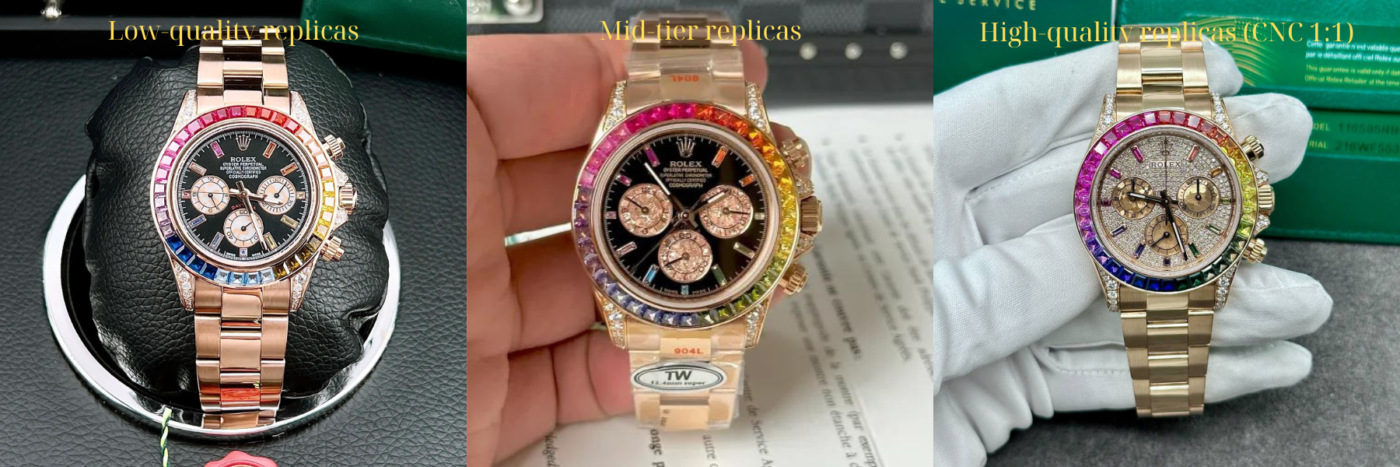
Price Comparison: What Are the Savings?
One of the most tangible advantages of purchasing a replica watch resides in its price point. When evaluating the cost, many consumers experience a shocking difference that figures into their decision-making.
- Cost Breakdown:
- Genuine luxury watches can range from $5,000 to $100,000 and more, depending on the brand and model.
- Comparatively, high-quality replicas are often priced between $200 and $500.
This stark price differentiation reveals significant savings for buyers willing to forgo authenticity in favor of style.
| Type of Watch | Price Range |
|---|---|
| Genuine Luxury Watch | $5,000 – $100,000+ |
| High-Quality Replica | $200 – $500 |
- Investment Value: While authentic luxury watches can appreciate over time, contributing to investment portfolios, replicas naturally hold no intrinsic value, leading many to justify their purchase with the hope of experimenting with styles before committing to an authentic luxury piece.
- Functional Cost Savings: Budget-conscious buyers often view replicas as an efficient means to explore various designs without incurring debts or sacrificing other financial responsibilities. Therefore, the savings associated with replicas invite those who prioritize aesthetics rather than signature brands to partake in the luxury watch market.
In summary, the price disparity between replica and genuine luxury watches can greatly influence consumer behavior, providing a financially attractive option for those looking to join the luxury trend without vast expenditure.
Fashion vs. Function: Utility of Replica Watches
The debate between fashion and function sits at the heart of the replica watch conversation, presenting an interesting dichotomy for consumers.
- Fashion-Driven Choices: Many individuals approach the purchase of replica watches primarily from a fashion standpoint. Aesthetics, alignment with personal style, and the current fashion landscape often supersede considerations like functionality and reliability. Consumers seek to portray a curated image, where the watch becomes a fashion accessory more than a utility device.
- Utility Concerns: Conversely, for those who value functionality, a replica may not suffice. High-end watches ensure precise timekeeping, durability, and added features, whereas many replicas focus on exterior design, often neglecting intricate the operational aspects. As a result, consumers may need to weigh their motivations when it comes to functionalities over mere appearances.
- Versatility in Use Cases: Some buyers opt for replica watches for practical, everyday wear while reserving genuine luxury timepieces for special occasions. This mindset allows consumers the benefits of both worlds fashion for daily engagement and luxury for essential displays, thus solidifying the market space for replicas.
Ultimately, the tension between fashion and function serves as a foundational pillar in consumer decisions regarding replica watches, leading to differentiated preferences based on individual values and priorities.
Cultural and Societal Influences on Replica Watch Buying
When examining the motivations behind purchasing replica watches, it’s essential to consider the impactful role of cultural and societal influences. Different norms, values, and beliefs can shape how individuals perceive and approach replicas within various contexts.
Regional Differences in Acceptance of Replica Watches
Cultural norms and economic conditions lead to disparate levels of acceptance for replica watches. Understanding regional differences is crucial in forming insights into consumer behavior.
- Affluence and Luxury Consumption: In affluent regions characterized by higher disposable income, replicas may be more readily accepted as fashion statements. Consumers in these areas might prioritize aesthetics over authenticity, viewing replicas as a viable means to access contemporary styles without excess expenditure.
- Strong Cultural Taboo: Conversely, certain cultures place a high premium on authenticity and brand integrity, which leads to a more marked stigmatization of replicas. In these regions, consumers may avoid replicas out of fear of social scrutiny, leading to a hesitation that can significantly impact purchasing trends.
- Societal Pressures: The acceptance of replicas is often influenced by the local culture and how society views luxury. In places where showcasing affluence is critical, replicas may hold less appeal. Alternatively, regions that celebrate creativity and self-expression may embrace the idea of wearing replicas as a form of personal expression.
- Consumer Behavior Trends: Observations reveal that, in more diverse fashion cultures, individuals may lean towards acquiring replicas to remain fashionable and keep up with trends. The practicality of owning various styles drives consumers to opt for replica pieces that provide both value and variety.
This understanding of regional differences exemplifies how cultural norms and societal pressures shape behaviors, revealing the multi-layered complexities influencing replica watch acceptance.

Peer Influence: How Friends and Social Circles Affect Choices
Peer influence exerts a substantial effect on purchasing behaviors, especially within fashion-centric markets such as watches. The dynamics of social circles profoundly shape consumers’ approaches to acquiring replica watches.
- Social Validation: Social networks often dictate trends and establish norms. When peers showcase luxury watches, others may feel compelled to mimic these behaviors to validate their status within the group. This phenomenon creates a positive feedback loop where replica watches become desirable as symbols of belonging.
- Trend Adherence: The visibility of peers wearing replicas may subsequently elevate the perceived value of owning such an item. As discussions circulate about different models or brands within social contexts, consensus fosters acceptance and reinforces the popularity of replicas.
- Social Media Participation: Online platforms serve as both a source of inspiration and a medium for validation. With influencers and followers showcasing their favorite replica pieces, peer influence becomes magnified, leading consumers towards similar purchasing decisions.
- Identity Formation: Engaging in such acquisition behaviors becomes a method of self-expression. Those who seek acceptance in their circles may perceive buying replicas as an assertion of identity, determined by the stylistic choices they make.
In summary, peer dynamics navigate the motivations of replica watch purchases intertwining social pressures, trends, and personal identity creating an ecosystem wherein replica watches gain popularity.
Collecting Trends: The Rise of Replica Watch Enthusiasts
The landscape of watch collecting has evolved to embrace the growing trends surrounding replica watches, disclosing an exciting niche within the marketplace.
- Growing Enthusiast Communities: As the interest in replica watches rises, dedicated communities have formed where enthusiasts share knowledge, reviews, and recommendations. These groups create an environment that fosters dialogue and sharing among members, increasing enthusiasm for replicas.
- Collectibility Factor: Some consumers find joy in collecting replicas as a cost-efficient alternative to investing in genuine watches. This trend allows collectors to explore diverse styles and models they might not otherwise consider resulting in a unique form of self-expression via their collections.
- Accessibility within Collecting Circles: Individuals with limited resources may turn toward replicas as a legitimate means to participate in the collector culture. The lower price point and an expansive variety of models available cater to diverse tastes, enhancing the collectibility and desirability of specific pieces.
- Curation and Personalization: As enthusiasts delve into the world of replicas, they might seek to curate their collections to reflect their individual tastes. The practice of mixing and matching different styles offers a personal touch in reflecting one’s identity through their watch selections.
Consequently, the replica watch phenomenon has birthed dedicated communities and inspired a new generation of collectors, showcasing the evolving nature of consumer culture in the luxury market.
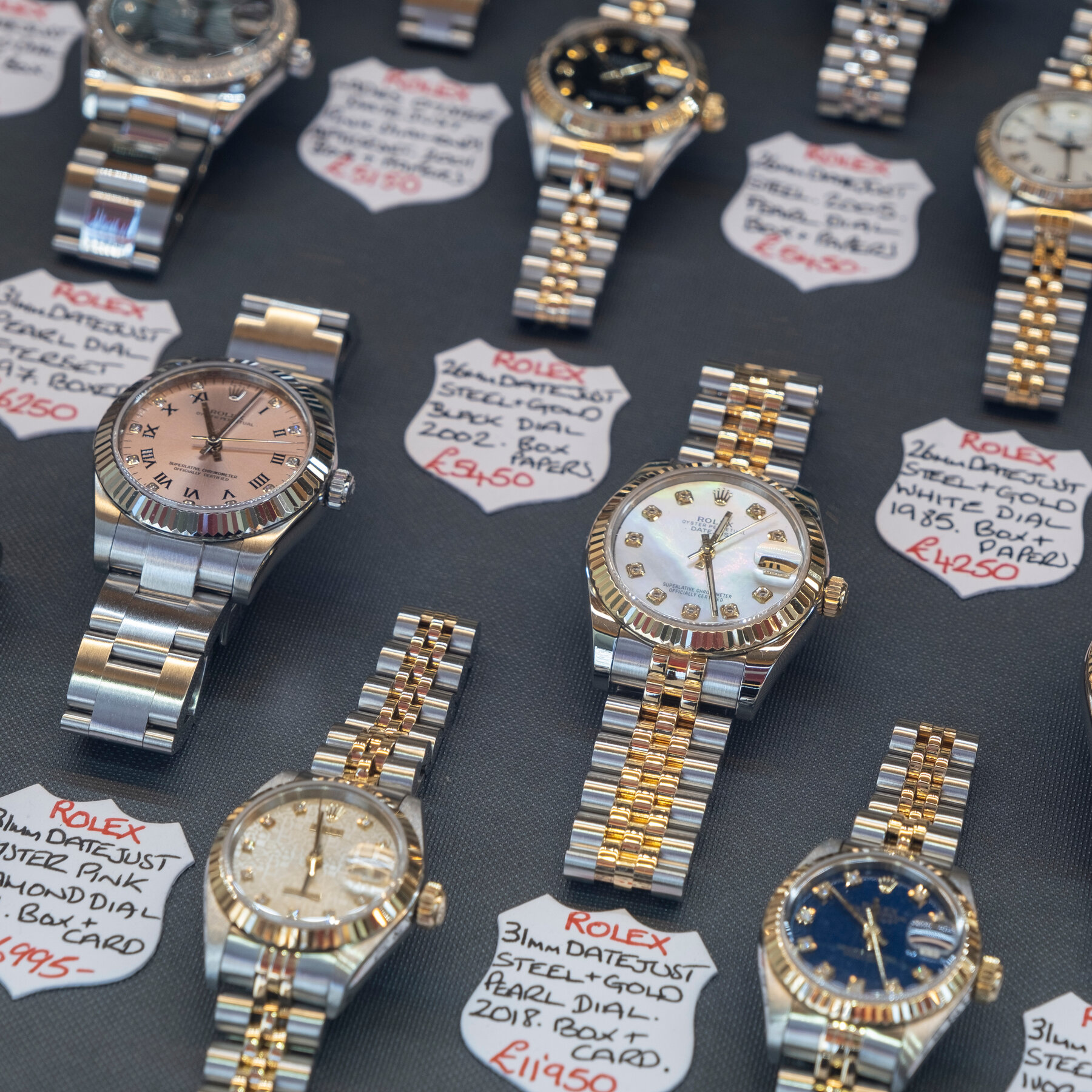
Conclusion: The Future of Replica Watch Purchases
In the intricate dance of consumer behavior, replica watches represent a unique intersection of aspirations, individuality, and economic accessibility. The multifaceted motivations behind purchasing these pieces encompass the desire for luxury, social validation, emotional fulfillment, and the ever-evolving influences of societal expectations and peer dynamics.
As the landscape of the market continues to evolve, fueled by social media trends and growing collectibility, it is imperative for consumers to remain aware of the implications surrounding replica ownership. The balance of values between style and authenticity creates nuanced considerations that matter more than ever in our consumer-driven society where the allure of luxury is juxtaposed with accessibility and where the elegant meets the everyday.
Forecasting Trends in the Replica Watch Market
Anticipating where the market for replica watches is heading involves considering the fusion of craftsmanship advancements, economic shifts, and social dynamics that define consumer demands. With the continued rise of accessibility, we can expect increased quality within the replica market, ensuring that budget-conscious consumers can experience the aesthetics of high-end watches without financial constraints.
- Technological Innovations: As technology advances, companies producing replicas are likely to invest in refining their production techniques, fostering higher quality and better precision. This evolution can lead to a surge in demand for replicas that maintain visual similarities to their authentic versions.
- Personalization Options: We may see an increased emphasis on customization within the replica watch market, allowing buyers to tailor their pieces to fit personal preferences. Such personalization will likely enhance perceived value and create greater engagement with consumers who value unique experiences.
- Sustainability Focus: As consumer values shift towards environmental considerations, the production of replicas using eco-friendly materials may gain traction. Manufacturers adopting sustainable practices can align with changing consumer preferences, influencing purchasing decisions.
Through a comprehensive understanding of these trends, consumers can navigate their purchasing decisions in the replica watch market while weighing potential ethical considerations and engaging in responsible consumption.
The Evolving Perception of Replica Watches in Society
The perception of replica watches continues to shift within society as consumer behaviors evolve. Initially relegated to the status of mere imitations, replicas are gaining traction as a legitimate alternative amidst the lofty prices associated with authentic luxury timepieces.
- Growing Acceptance: A growing number of individuals are willing to embrace replicas as fashionable statements, providing access to the aesthetics of luxury without the financial commitment. Cultural attitudes toward ownership inform this shift, suggesting a changing narrative within consumer identity.
- Social Dynamics and Stigmatization: As opinions surrounding replicas become more nuanced, societal stigma may wane. The interplay between fashion, prestige, and accessibility fosters an environment in which replica purchases are increasingly normalized, especially among younger demographics.
- Informed Consumer Choices: With the proliferation of information available through social media and online communities, consumers are becoming more educated and discerning regarding their purchasing decisions. This awareness fosters a dialogue around ethical considerations, driving changing attitudes about luxury and authenticity.
In summary, the evolving representation of replica watches in society calls for an ongoing exploration into how perceptions shape consumer choices. As individuals and cultures continue to navigate these dynamics, the replica watch market closes the gap between aspiration and accessibility while simultaneously reflecting changing societal values.
Frequently Asked Questions (FAQs)
- Are replica watches legal to buy?
- Yes, purchasing replica watches is legal in most places; however, the sale and distribution of counterfeit goods often infringe on trademark laws.
- How can I identify a quality replica watch?
- Look for details such as the weight, accuracy of the logo, finishing quality, and movement type. High-quality replicas often have more precision and attention to detail.
- Is it ethical to wear a replica watch?
- The ethics of wearing replicas can be subjective. While some justify their purchase as fashion statements, others argue it undermines the authenticity and value of luxury brands.
- How long do replica watches typically last?
- The lifespan of a replica watch can vary significantly based on quality, ranging from a few months for lower-end models to several years for higher-quality “super clones.”
- Can I find specific brands as replicas?
- Yes, many different luxury watch brands offer replicas, ranging from Rolex to Omega and beyond. The accuracy and quality can differ based on manufacturers and sellers.
Key Takeaways
- Replica watches provide accessibility to luxury aesthetics at a fraction of the cost.
- Economic factors, like affordability, drive many to choose replicas over genuine pieces.
- Status and social validation heavily influence consumer purchasing behavior regarding watches.
- The rise of social media has significantly impacted trends and the popularity of replica watches.
- Emotional connections and brand perceptions also play a crucial role in motivations for replica purchases.
Suggested Google Keywords
- reasons to buy replica watches
- benefits of replica watches
- replica watches vs genuine watches
- are replica watches worth it
- trends in the replica watch market
By comprehensively addressing both the motivations and intricacies of the replica watch market, consumers can better understand their choices, allowing for informed purchasing decisions while navigating the complexities of luxury within modern society.

